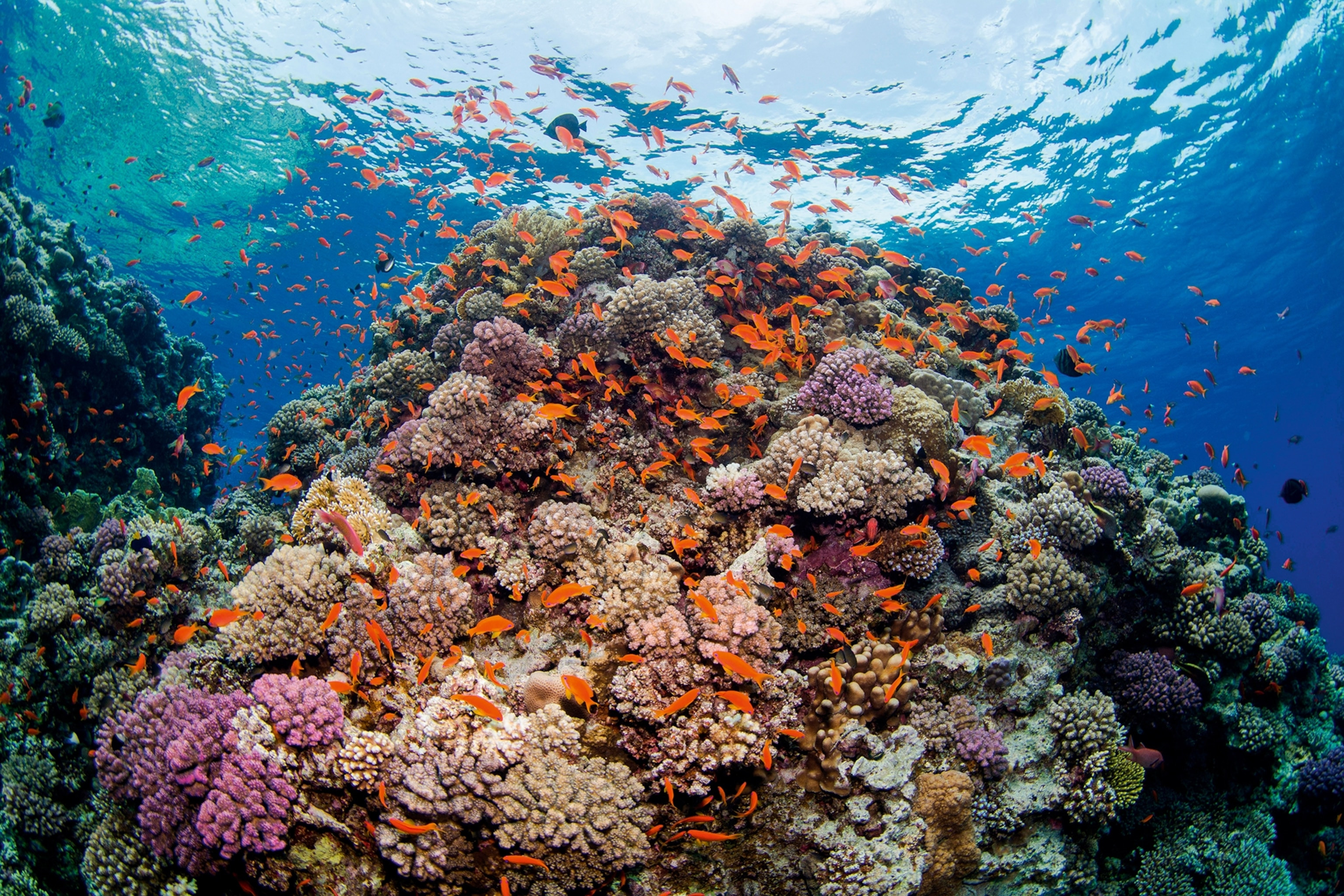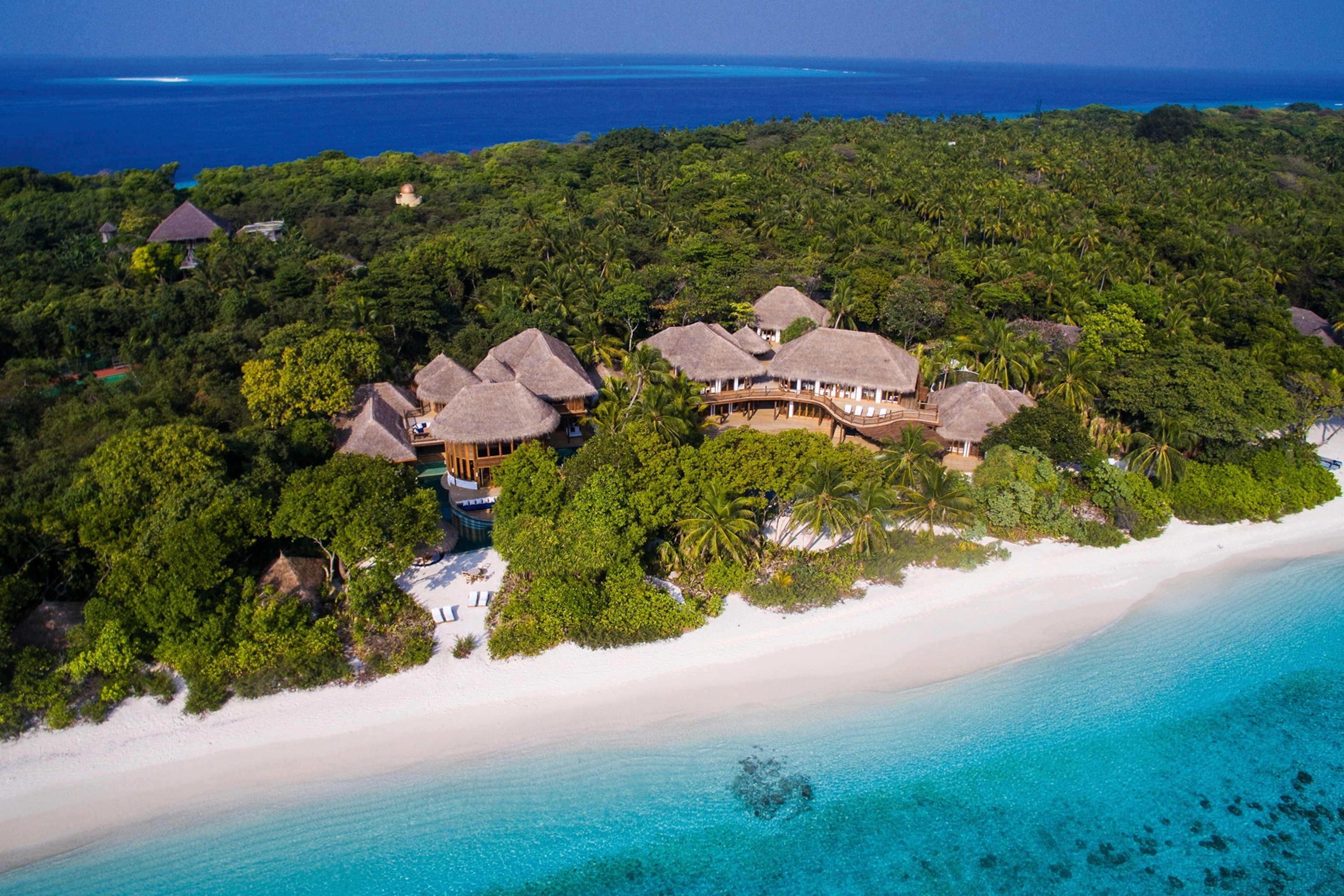The Indian Ocean faces significant challenges from climate change, but can tourism contribute to a more sustainable future? SIXT.VN offers convenient travel solutions, allowing you to explore Vietnam while supporting eco-friendly practices. Discover how you can travel responsibly and contribute to environmental preservation through sustainable tourism initiatives and eco-conscious travel options, and minimize your carbon footprint.
1. Understanding the Impact of Climate Change on Indian Ocean Tourism
1.1 How is Climate Change Affecting the Indian Ocean Region?
Climate change significantly impacts the Indian Ocean region, primarily through rising sea levels and thermal expansion. According to research from the Intergovernmental Panel on Climate Change (IPCC) in 2021, sea levels in the Indian Ocean are rising faster than the global average, threatening coastal communities and ecosystems. This rise is due to melting polar ice and the thermal expansion of water, where warmer water expands in volume. The Sixth Assessment Report (AR6) of the Intergovernmental Panel on Climate Change (IPCC) indicates that the sea level rise is accelerating, posing significant threats to low-lying islands and coastal regions in the Indian Ocean.
1.2 What are the Specific Threats to Coastal Areas and Ecosystems?
Coastal areas and ecosystems face multiple threats, including increased flooding, erosion, and saltwater intrusion. Coral reefs, vital for marine biodiversity and coastal protection, are particularly vulnerable to bleaching due to rising sea temperatures. The International Union for Conservation of Nature (IUCN) reports that coral bleaching events have become more frequent and severe, endangering these crucial habitats. Healthy coral reefs play a vital role in reducing wave energy and preventing coastal erosion. Preserving these natural barriers is essential for the long-term sustainability of coastal tourism.
1.3 How Do Rising Sea Levels Impact Tourism Infrastructure?
Rising sea levels threaten tourism infrastructure, including hotels, resorts, and transportation networks. Many coastal properties are at risk of inundation, leading to decreased property values and potential business closures. A study by the World Tourism Organization (UNWTO) in 2019 highlighted that coastal tourism destinations face significant economic losses if adaptive measures are not implemented. Protecting tourism infrastructure requires strategic planning and investment in resilient infrastructure. SIXT.VN can help you navigate these changing landscapes with reliable transportation and up-to-date travel information.
 aerial shot of sandy island
aerial shot of sandy island
Low-lying Maldivian islands are threatened by rising sea levels. This emphasizes the urgent need for sustainable tourism practices to protect these destinations.
2. The Role of Tourism in Promoting Sustainability
2.1 Can Tourism Be a Force for Good in Environmental Conservation?
Tourism can be a significant force for environmental conservation by raising awareness and generating revenue for conservation efforts. Ecotourism initiatives, in particular, focus on minimizing environmental impact and supporting local communities. Research from The International Ecotourism Society (TIES) in 2020 indicates that ecotourism can provide economic incentives for protecting natural areas and promoting sustainable practices. By choosing eco-friendly options, travelers can contribute to preserving the natural beauty of destinations like Ha Long Bay and Phong Nha-Ke Bang.
2.2 How Can Sustainable Tourism Practices Reduce Environmental Impact?
Sustainable tourism practices can reduce environmental impact through various methods, including reducing carbon emissions, conserving water and energy, and minimizing waste. The United Nations Environment Programme (UNEP) emphasizes the importance of adopting sustainable consumption and production patterns in the tourism sector. Travelers can make a difference by choosing accommodations that implement energy-efficient technologies, supporting local businesses that prioritize sustainability, and participating in responsible tourism activities. SIXT.VN encourages travelers to explore Hanoi’s cultural sites responsibly by providing eco-friendly transportation options and information on sustainable tours.
2.3 What Are Some Examples of Eco-Friendly Accommodations and Tours?
Eco-friendly accommodations and tours include resorts that use renewable energy, hotels that implement water conservation measures, and tour operators that promote responsible wildlife viewing. TripAdvisor’s GreenLeaders program recognizes accommodations that have implemented environmentally friendly practices. In Vietnam, many eco-lodges and homestays are committed to sustainable operations, offering guests a chance to experience the country’s natural beauty while minimizing their environmental footprint. SIXT.VN can help you find and book eco-friendly accommodations and tours, ensuring a sustainable and enjoyable travel experience.
3. Sustainable Tourism Initiatives in the Indian Ocean Region
3.1 What Initiatives are Being Implemented to Protect Coral Reefs?
Several initiatives are being implemented to protect coral reefs, including coral propagation, marine protected areas, and community-based conservation programs. Marine biologists are working to breed hardier coral species that can withstand warming seas, as highlighted by Jamie Craggs’ work at the Soneva Fushi resort in the Maldives. The establishment of marine protected areas helps to limit human activities that can harm coral reefs. Organizations like the Marine Conservation Society are actively involved in coral reef restoration projects.
3.2 How are Local Communities Involved in Sustainable Tourism Efforts?
Local communities play a crucial role in sustainable tourism efforts by managing natural resources, providing authentic cultural experiences, and benefiting economically from tourism. Community-based tourism initiatives empower local residents to participate in decision-making processes and ensure that tourism revenues are reinvested in community development projects. The World Bank supports various community-based tourism projects in developing countries, recognizing their potential to reduce poverty and promote sustainable development. Engaging with local communities enhances the authenticity and sustainability of tourism experiences.
3.3 What Role Do Governments Play in Promoting Sustainable Tourism?
Governments play a vital role in promoting sustainable tourism by implementing policies, enforcing regulations, and investing in sustainable infrastructure. Shauna Aminath, the Maldives’ minister of the environment, climate change and technology, emphasizes the government’s commitment to strict planning laws, wastewater treatment regulations, and bans on single-use plastics. The United Nations World Tourism Organization (UNWTO) works with governments worldwide to develop national tourism strategies that prioritize sustainability. Government support is essential for creating a regulatory framework that encourages sustainable tourism practices.
 a coral reef
a coral reef
Coral reefs play a crucial role in slowing rising sea levels, highlighting the importance of their preservation. Initiatives like coral propagation and marine protected areas are essential for their survival.
4. Practical Tips for Sustainable Travel in the Indian Ocean Region
4.1 How Can Travelers Reduce Their Carbon Footprint?
Travelers can reduce their carbon footprint by choosing eco-friendly transportation options, such as trains and buses, flying less frequently, and opting for direct flights. Carbon offsetting programs allow travelers to invest in projects that reduce greenhouse gas emissions. The David Suzuki Foundation recommends packing light to reduce fuel consumption during flights. SIXT.VN provides information on transportation options and carbon offsetting programs to help you make responsible travel choices.
4.2 What Sustainable Accommodation Options are Available?
Sustainable accommodation options include eco-lodges, green hotels, and homestays that implement environmentally friendly practices. Look for accommodations that have been certified by recognized sustainability standards, such as LEED or Green Globe. Booking.com features a Sustainable Travel section that highlights accommodations committed to sustainability. Consider staying at smaller, locally owned guesthouses that support the local economy and minimize environmental impact.
4.3 How Can Travelers Support Local Communities and Economies?
Travelers can support local communities and economies by purchasing locally made products, dining at local restaurants, and participating in community-based tourism activities. Avoid buying souvenirs made from endangered species or unsustainable materials. Fair Trade tourism initiatives ensure that local artisans and producers receive fair wages and benefits. The Adventure Travel Trade Association (ATTA) promotes responsible travel practices that benefit local communities.
5. The Economic Benefits of Sustainable Tourism
5.1 How Does Sustainable Tourism Contribute to Economic Growth?
Sustainable tourism contributes to economic growth by creating jobs, generating revenue, and diversifying local economies. Ecotourism, in particular, can provide economic incentives for protecting natural areas and promoting sustainable practices. A study by the World Travel & Tourism Council (WTTC) in 2021 showed that sustainable tourism can increase tourism revenues while reducing environmental impact. Investing in sustainable tourism infrastructure can attract high-value tourists who are willing to pay more for eco-friendly experiences.
5.2 What Are the Long-Term Economic Advantages of Protecting Natural Resources?
Protecting natural resources provides long-term economic advantages by ensuring the sustainability of tourism destinations and reducing the risk of environmental degradation. Healthy ecosystems support tourism activities such as diving, snorkeling, and wildlife viewing, which generate revenue for local communities. The Economics of Ecosystems and Biodiversity (TEEB) initiative highlights the economic value of ecosystem services and the costs of environmental degradation. Investing in conservation efforts can enhance the long-term economic viability of tourism destinations.
5.3 How Can Tourism Revenues Be Reinvested in Conservation Efforts?
Tourism revenues can be reinvested in conservation efforts through various mechanisms, including park entrance fees, tourism taxes, and donations from tourists. Some resorts and tour operators allocate a portion of their profits to conservation projects. Conservation trust funds can be established to manage and distribute tourism revenues for conservation purposes. Transparency and accountability are essential for ensuring that tourism revenues are effectively reinvested in conservation efforts.
6. Case Studies of Successful Sustainable Tourism Initiatives
6.1 What are Some Examples of Successful Coral Reef Restoration Projects?
Successful coral reef restoration projects include coral gardening, coral transplantation, and the use of artificial reefs. The Coral Restoration Foundation is a leading organization in coral reef restoration, with projects in the Caribbean and other regions. Biorock technology uses low-voltage electricity to stimulate coral growth, resulting in faster and more resilient coral reefs. These projects demonstrate the potential for restoring damaged coral reefs and enhancing marine biodiversity.
6.2 How Have Communities Benefited from Sustainable Tourism in Specific Regions?
Communities have benefited from sustainable tourism in various regions through job creation, increased income, and improved infrastructure. In Costa Rica, ecotourism has transformed local economies and provided incentives for protecting rainforests. In Nepal, community-based trekking initiatives have empowered local communities to manage tourism activities and conserve natural resources. These case studies highlight the potential for sustainable tourism to improve livelihoods and promote community development.
6.3 What Policies Have Proven Effective in Promoting Sustainable Tourism?
Effective policies for promoting sustainable tourism include environmental regulations, certification programs, and economic incentives. The European Union’s Eco-label for tourist accommodations encourages hotels to adopt environmentally friendly practices. Tax incentives and subsidies can encourage tourism businesses to invest in sustainable technologies. Integrated coastal zone management policies can protect coastal ecosystems and promote sustainable tourism development.
 An aerial shot of an island
An aerial shot of an island
Staff at Soneva Fushi grow hardy coral before moving them to sea nurseries, showcasing a proactive approach to coral reef conservation.
7. The Future of Tourism in the Indian Ocean: Challenges and Opportunities
7.1 What Are the Biggest Challenges Facing Sustainable Tourism in the Region?
The biggest challenges facing sustainable tourism in the Indian Ocean region include climate change impacts, overtourism, and inadequate infrastructure. Rising sea levels and coral bleaching threaten the natural attractions that draw tourists to the region. Overtourism can strain local resources and degrade the environment. Insufficient investment in sustainable infrastructure can limit the potential for sustainable tourism development. Addressing these challenges requires coordinated efforts from governments, businesses, and communities.
7.2 What Opportunities Exist for Innovation and Growth in Sustainable Tourism?
Opportunities exist for innovation and growth in sustainable tourism through the development of new technologies, eco-friendly products, and community-based tourism initiatives. Smart tourism technologies can enhance the efficiency and sustainability of tourism operations. Green building practices can reduce the environmental impact of tourism infrastructure. Community-based tourism can provide authentic cultural experiences and generate income for local communities.
7.3 How Can Technology Play a Role in Promoting Sustainable Tourism Practices?
Technology can play a crucial role in promoting sustainable tourism practices through the development of mobile apps, online platforms, and data analytics tools. Mobile apps can provide tourists with information on sustainable tourism options and carbon offsetting programs. Online platforms can connect travelers with eco-friendly accommodations and tours. Data analytics can help tourism businesses monitor their environmental impact and identify opportunities for improvement. SIXT.VN leverages technology to provide convenient and sustainable travel solutions.
8. Engaging Tourists in Sustainable Practices
8.1 How Can Tourists Be Educated About Sustainable Tourism Options?
Tourists can be educated about sustainable tourism options through brochures, websites, and social media campaigns. Interpretive signage at tourism sites can provide information on the importance of conservation. Educational programs and workshops can raise awareness about sustainable practices. Tourism businesses can train their staff to educate guests about sustainability issues.
8.2 What Incentives Can Encourage Tourists to Choose Sustainable Options?
Incentives that can encourage tourists to choose sustainable options include discounts, rewards, and preferential treatment. Green hotels can offer discounts to guests who participate in water and energy conservation programs. Tour operators can reward tourists who choose eco-friendly tours with special experiences. Loyalty programs can incentivize tourists to support sustainable tourism businesses.
8.3 How Can Social Media Be Used to Promote Sustainable Tourism?
Social media can be used to promote sustainable tourism by sharing inspiring stories, showcasing eco-friendly products, and engaging with travelers online. Influencer marketing can raise awareness about sustainable tourism issues and promote responsible travel practices. User-generated content can highlight positive examples of sustainable tourism and inspire others to take action. Social media campaigns can encourage travelers to share their sustainable travel experiences and inspire their friends and followers.
9. Policy Recommendations for Sustainable Tourism Development
9.1 What Policies Can Governments Implement to Support Sustainable Tourism?
Governments can implement policies to support sustainable tourism, including environmental regulations, certification programs, and economic incentives. Environmental regulations can protect natural resources and limit pollution. Certification programs can recognize and reward tourism businesses that implement sustainable practices. Economic incentives can encourage investment in sustainable technologies and infrastructure.
9.2 How Can Public-Private Partnerships Advance Sustainable Tourism Goals?
Public-private partnerships can advance sustainable tourism goals by leveraging the resources and expertise of both the public and private sectors. Governments can provide funding and regulatory support, while private companies can contribute innovation and management skills. Public-private partnerships can develop and implement sustainable tourism projects that benefit both the environment and the economy.
9.3 What International Agreements and Standards Promote Sustainable Tourism?
International agreements and standards that promote sustainable tourism include the Sustainable Development Goals (SDGs), the Global Sustainable Tourism Council (GSTC) criteria, and the United Nations Environment Programme (UNEP) guidelines. The SDGs provide a framework for achieving sustainable development by 2030. The GSTC criteria establish global standards for sustainable tourism practices. UNEP guidelines provide guidance on developing and implementing sustainable tourism policies.
10. The Role of SIXT.VN in Promoting Sustainable Tourism in Vietnam
10.1 How Does SIXT.VN Support Eco-Friendly Travel Options?
SIXT.VN supports eco-friendly travel options by providing information on sustainable accommodations, tours, and transportation options. We partner with local businesses that are committed to sustainability and promote responsible tourism practices. Our online platform makes it easy for travelers to find and book eco-friendly travel options, ensuring a sustainable and enjoyable travel experience.
10.2 What Services Does SIXT.VN Offer to Help Tourists Travel Responsibly?
SIXT.VN offers a range of services to help tourists travel responsibly, including airport transfer services, hotel booking assistance, and tour recommendations. Our airport transfer services use fuel-efficient vehicles and prioritize safe and reliable transportation. We partner with hotels that implement energy-efficient technologies and promote water conservation. Our tour recommendations highlight sustainable tourism activities that benefit local communities and minimize environmental impact.
10.3 How Can Travelers Book Sustainable Tourism Services Through SIXT.VN?
Travelers can book sustainable tourism services through SIXT.VN by visiting our website and exploring our eco-friendly travel options. Our online platform provides detailed information on sustainable accommodations, tours, and transportation options. You can easily filter your search results to find the most sustainable options that meet your needs. Book your sustainable travel services through SIXT.VN and contribute to a greener future for tourism in Vietnam.
Address: 260 Cau Giay, Hanoi, Vietnam
Hotline/Whatsapp: +84 986 244 358
Website: SIXT.VN
FAQ about Indian Ocean Tourism and Sustainability
1. What is sustainable tourism?
Sustainable tourism is tourism that takes full account of its current and future economic, social and environmental impacts, addressing the needs of visitors, the industry, the environment and host communities.
2. Why is sustainable tourism important in the Indian Ocean region?
It’s vital because the region is highly vulnerable to climate change, with rising sea levels and coral bleaching threatening tourism-dependent economies and ecosystems.
3. What can tourists do to travel more sustainably in the Indian Ocean?
Tourists can choose eco-friendly accommodations, reduce their carbon footprint through transportation choices, support local businesses, and participate in responsible tourism activities.
4. How do coral reefs help with rising sea levels?
Healthy coral reefs act as natural barriers, reducing wave energy and preventing coastal erosion, thus helping to protect coastlines from rising sea levels.
5. What are some examples of eco-friendly accommodations?
Eco-friendly accommodations include resorts that use renewable energy, hotels that implement water conservation measures, and smaller, locally-owned guesthouses.
6. How can local communities benefit from sustainable tourism?
Local communities benefit through job creation, increased income, improved infrastructure, and the preservation of their cultural heritage.
7. What role does technology play in sustainable tourism?
Technology helps through mobile apps providing information on sustainable options, online platforms connecting travelers with eco-friendly choices, and data analytics monitoring environmental impact.
8. What policies can governments implement to support sustainable tourism?
Governments can implement environmental regulations, certification programs, and economic incentives to encourage sustainable practices within the tourism sector.
9. How can I reduce my carbon footprint while traveling?
Reduce your carbon footprint by flying less frequently, choosing direct flights, using trains and buses, and participating in carbon offsetting programs.
10. What are some successful case studies of sustainable tourism initiatives?
Examples include ecotourism in Costa Rica, community-based trekking in Nepal, and coral reef restoration projects in various regions.



